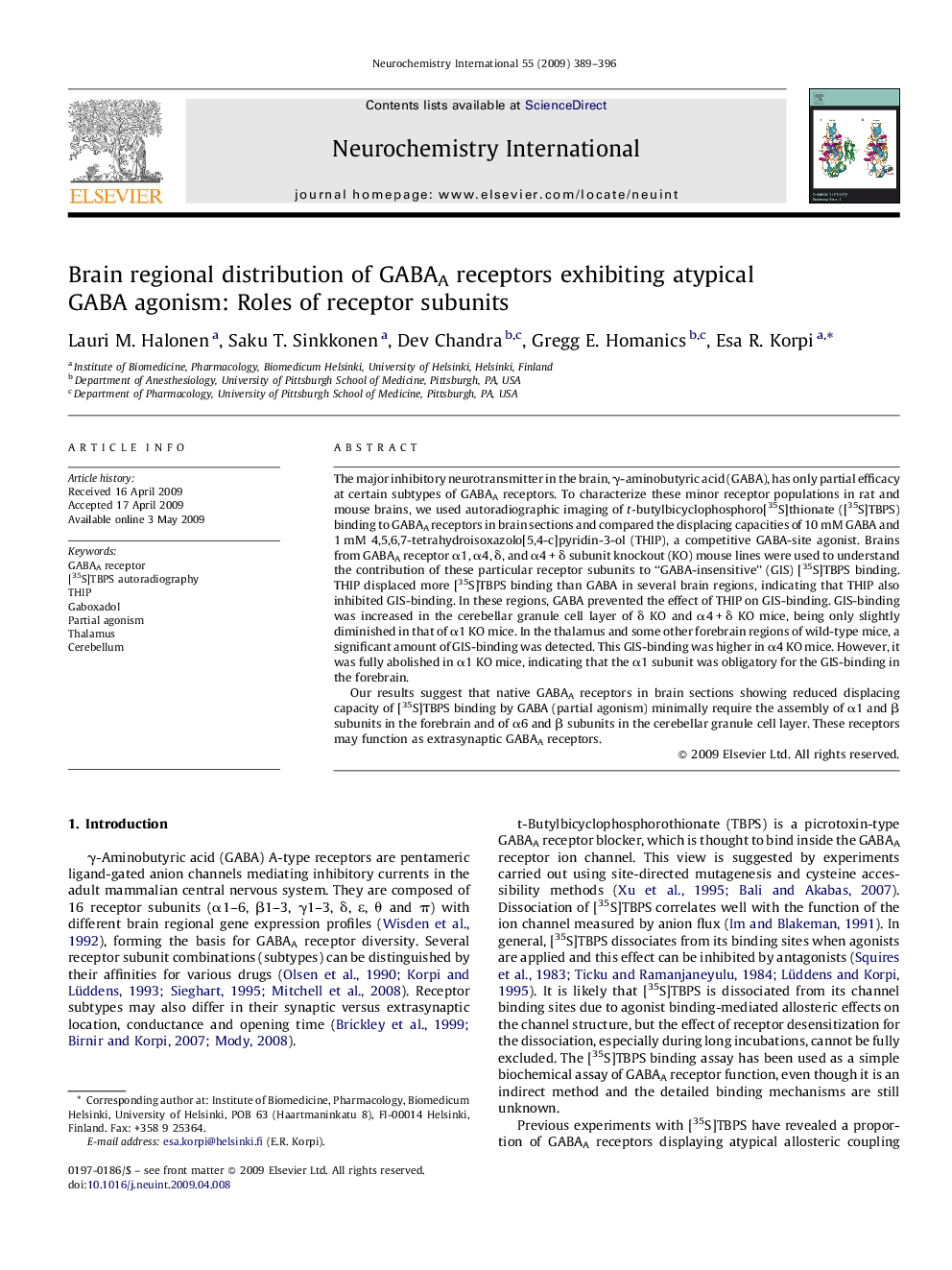| Article ID | Journal | Published Year | Pages | File Type |
|---|---|---|---|---|
| 2201658 | Neurochemistry International | 2009 | 8 Pages |
The major inhibitory neurotransmitter in the brain, γ-aminobutyric acid (GABA), has only partial efficacy at certain subtypes of GABAA receptors. To characterize these minor receptor populations in rat and mouse brains, we used autoradiographic imaging of t-butylbicyclophosphoro[35S]thionate ([35S]TBPS) binding to GABAA receptors in brain sections and compared the displacing capacities of 10 mM GABA and 1 mM 4,5,6,7-tetrahydroisoxazolo[5,4-c]pyridin-3-ol (THIP), a competitive GABA-site agonist. Brains from GABAA receptor α1, α4, δ, and α4 + δ subunit knockout (KO) mouse lines were used to understand the contribution of these particular receptor subunits to “GABA-insensitive” (GIS) [35S]TBPS binding. THIP displaced more [35S]TBPS binding than GABA in several brain regions, indicating that THIP also inhibited GIS-binding. In these regions, GABA prevented the effect of THIP on GIS-binding. GIS-binding was increased in the cerebellar granule cell layer of δ KO and α4 + δ KO mice, being only slightly diminished in that of α1 KO mice. In the thalamus and some other forebrain regions of wild-type mice, a significant amount of GIS-binding was detected. This GIS-binding was higher in α4 KO mice. However, it was fully abolished in α1 KO mice, indicating that the α1 subunit was obligatory for the GIS-binding in the forebrain.Our results suggest that native GABAA receptors in brain sections showing reduced displacing capacity of [35S]TBPS binding by GABA (partial agonism) minimally require the assembly of α1 and β subunits in the forebrain and of α6 and β subunits in the cerebellar granule cell layer. These receptors may function as extrasynaptic GABAA receptors.
